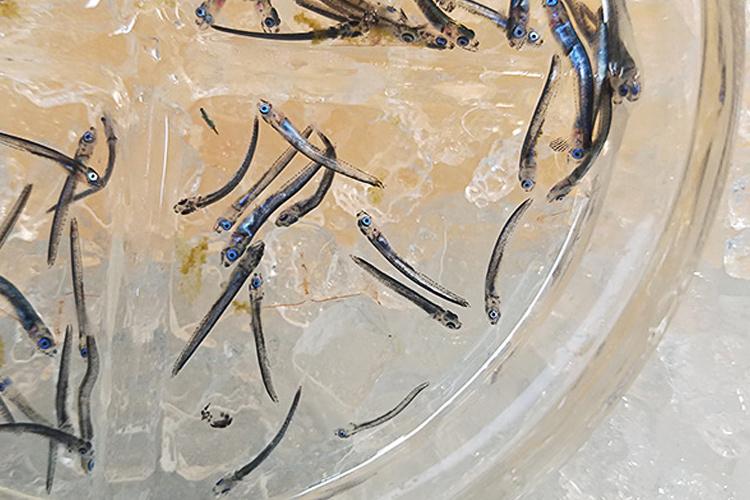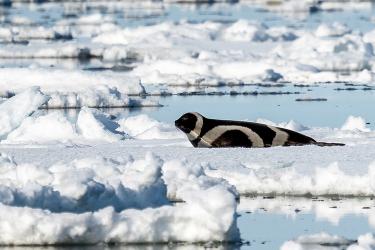Sablefish Larvae in the Research Spotlight
We are now officially halfway done with the survey! The weather recently became rough so the ship is currently anchored in a cove protected from the wind. As we wait for the weather to improve, we have been busy checking our data, tending to the gear, and getting everything prepped for our last nine days at sea.
We have sampled more than 150 stations and are about to sample a second area between the Shumagin Islands and Kodiak Island for sablefish. After extensive fishing in the 1970s, the number of sablefish declined rapidly in the Gulf of Alaska. After regulations were put in place, the population began to recover and had a peak abundance in the 1990s, although the population was still smaller than it was before heavy fishing occurred. Now, the numbers are relatively lower than the peak, though the Gulf of Alaska stock is considered sustainable.
Scientists believe sablefish population size is related to survival in the early life stages. That is before the fish grow large enough to be caught, which highlights the value of early life history research. Unlike the adults, which live along the seafloor in depths up to 1,500 meters, sablefish larvae live in the very top layer of the ocean. While bongo nets effectively capture other larval fish, these nets alone aren’t effective at the surface. To study the early stages of sablefish, we must use an additional device, known as a neuston net. The neuston net skims organisms from the surface by fishing half in and half out of the water.

A researcher monitors the neuston net collecting organisms that live near the ocean surface.
For larvae, life near the surface can be difficult. At the surface, larvae are exposed to predators like seabirds. Plus, larvae are subjected to variable temperatures, salinities, winds, solar radiation, and currents. At deeper depths, conditions often remain constant.
We are not sure how water conditions influence the growth and survival of sablefish during the first year of life. Sablefish can also grow very quickly, which means they need to eat copious amounts of nutritious zooplankton. To assess how these variables affect the survival of young sablefish, which will impact the number of individuals that survive into adulthood, we are collecting larvae from different parts of the Gulf of Alaska. Along with several other researchers, we are going to identify the regions where we caught the most sablefish larvae, examine what the larvae are eating, and then determine how healthy these individuals are. With these data, we can start to piece together how life at the surface influences the survival of sablefish larvae.
Meet the Blogger

Ali Deary
Ali Deary is an East Coast transplant to the Pacific Northwest. While she has been to Alaska as an intern in previous surveys, this research mission is her first as a NOAA employee. Ali graduated with a bachelor’s degree in marine biology from the College of Charleston and obtained her doctorate in marine science from the College of William and Mary.
For her dissertation, she looked at how bone development influenced foraging in early stage fish in the Chesapeake Bay. She joined the Ecosystems and Fisheries Oceanography Coordinated Investigationsteam in January. In her free time, Ali enjoys exploring the Seattle area with her corgi.



